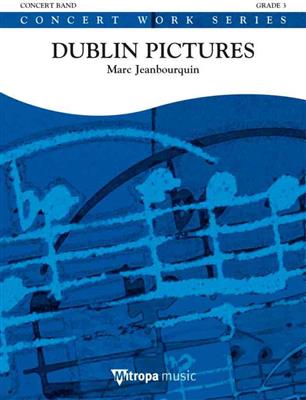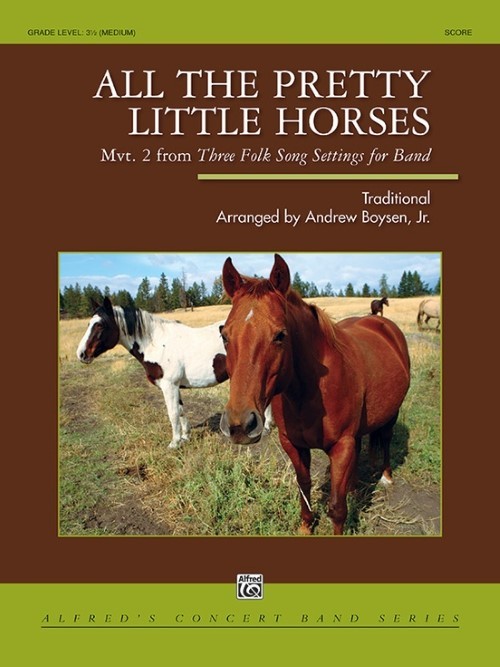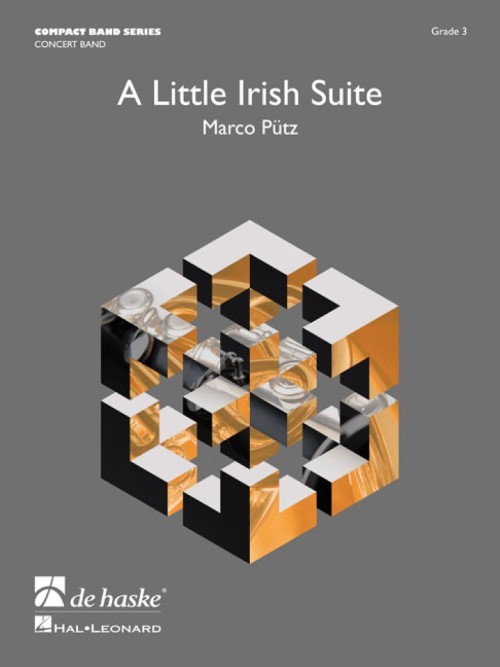Results
-
 £38.50
£38.50Teachers from Outer Space! - Amy Adam
You can't lose when you get your administrators or other staff members involved in your performance. Teachers from Outer Space is a hilarious comedy skit for band that lets three or more of your staff members temporarily become outer space aliens and use every corny outer space joke in the book! If you are looking for a funny contrast highlight - greetings Earthling, you've found it!
Estimated dispatch 7-14 working days
-
£78.95
Christmas Rondo - Gene Milford
A joyous arrangement of three familiar Christmas favorites is also a means of introducing the rondo form to your students. "Jolly Old Saint Nicholas" is the recurring rondo A-theme, presented with variation each time and featuring different sections of the band. The contrasting B- and C-themes are "Deck the Halls" and "Up on the Housetop," providing the maximum opportunity for style and dynamic contrast. A delightful choice for your next holiday concert.
Estimated dispatch 7-14 working days
-
 £144.99
£144.99Suite Marchigiana - Luciano Feliciani
According to a famous statement by Herder, folk songs represent the archives of a nation's knowledge, the expression of its heart and theimage that reflects its history and identity. Suite Marchigiana is a three movement piece, inspired by folk songs from the Marche in central Italy, a region with a very ancient and rich folkloristic heritage. The first movement elaborates on the well-known Pasquella. The Pasquella comes from a traditional winter begging ritual where a group of musicians go from house to house singing verses, wishing their audience good health, wealth and abundance, in return for small amounts of money, food and wine. The second movementis an Andante Triste inspired by an old song called Sona la mezzanotte (The Clock Strikes Midnight), a melancholic song that reminds us of unhappy love stories, bereavement, and so on. Luciano Feliciani concludes the suite with the Saltarello Marchigiano, which is bright and sparkling, and therefore in complete contrast with the previous movement. Although unproven, the Saltarello is thought to have its origins in the 'saltatio' (a latin dance). While the choreae were group dances, circular in structure and with a rhythmic progression, the saltationes were more lively in character. The fast, frenetic and joyous saltarello was without any doubt the most famous musical expression of rural central Italy in the nineteenth century.
Estimated dispatch 7-14 working days
-
£184.99
Rubicon - Bert Appermont
The Rubicon is a river in Northern Italy which Julius Caesar crossed with his army in 49 BC in defiance of the leaders of Rome, who feared his power. A civil war against rival Pompey ensued, which culminated in Caesar seizing power as the absoluteruler of Rome. The phrase "crossing the Rubicon" therefore refers to any person committing himself irrevocably to a risky, decisive and irrevocable of course of action.The work consists of three parts that deal with this important moment in history.Part 1 (Meditation) symbolises Caesars request to the Gods to assist him in his difficult choice. In a slow introduction we hear the melancholy and beseeching sounds of the duduk (alternatively, this part can be played by a soprano saxophone)and of the soprano solo singer over the bourdon accompaniment. The soprano solo singer then sings "dona tibi pacem" (give him rest) in a melodious and probing theme.In Part 2 (Battle of Pharsalus) trumpets and trombones resound alternately ina stately Roman fanfare, producing a stereophonic effect. This develops into a martial theme in which Caesars impressive army goes to battle against the army of rival Pompey. While the theme of Caesars army fades away, Pompeys theme emerges as anaive dance in six-eight time. His army is definitely in the majority and it believes it can easily defeat the enemy. Suddenly trumpets and trombones clash on two sides of the orchestra: Caesars army advances and attacks. A fierce battle ensues inwhich the two themes are played alternately as well as simultaneously. Thanks to his shrewd battle tactics, Caesar manages to win this legendary battle after all: his theme resounds ever louder in trumpets and horns until everything dies out andchanges into a kind of reconciliation between the soldiers of the two armies. The melancholy "dona tibi pacem" from part 1 now serves as a reconciliation theme.Caesar is now the sole ruler of the New Roman Empire, which would be destined to leave itsmark on our Western civilisation to this day. The third part is a sparkling succession of dance music (Dance) with many Greek and Roman elements in which Caesars victory is praised and celebrated. It is common knowledge that the culture(arts, gods, etc.) of the Romans drew heavily on Greek culture. I have therefore used an authentic Greek theme (the Seikolos song) several times in this part (bar 17 in the euphonium, bar 60 in the base section, bar 68 in the sopranosaxophone) to suggest the music of that era and to evoke the right atmosphere. After a gradual increase in tempo in the entire orchestra, the opening melody gloriously resounds once more, surrounded by virtuoso dance music. The work ends withbombastic brass fanfares in which Caesars theme triumphs once more.NOTE FOR THE CONDUCTOR:The Armenian duduk and the monochord that are used in the introduction give a special tone to the music, but could be substituted (soprano saxophone instead ofthe duduk) or left out (monochord). The soprano solo is also doubled within the orchestra and could therefore also be left out if necessary, although it does provide the work with an extra dimension. The male voices in the introduction and the finalecould possibly be replaced with a synthesizer with choral setting.As a visual and acoustic element in part 2, the trumpets, the e-flat cornet, the small drum and trombones can be stood up and placed at two sides of the orchestra (bar 80).Seen fromthe point of view of the conductor, put the trumpets, the e-flat cornet and the small drum in the left section and the trombones in the right section of the orchestra. This also helps to create a visual contrast between the two themes of the secondpart. The players can be seated again at bar 97 or bar 121. The soprano soloist can be placed in or in front of the orchestra, depending on what gives the best result. For the conclusion of the work the soprano solo can be sung from afar (from thewings) to create additional atmosphere.This work was composed especially for the "St Joseph" brass band from Pey/Echt (Belgium) with conductor Mark Prils.
Estimated dispatch 7-14 working days
-
£79.99
Remembrance - James L. Hosay
This moving and beautiful "Yiddish Rhapsody" includes the songs "Hine' Ma Tov", "Black Cherries" and "Why Is The Sky?". This skillful arrangement for intermediate level concert band will add drama to your concert or special event and raise your student's awareness of the importance of basic human rights. Drawn from arrangements of Holocaust songs he has done over the years for the Washington D.C. U.S. Army Band (Pershing's Own), James L. Hosay's REMEMBRANCE helps to keep us mindful of that tragic time in our history. The three songs provide very effective contrast, and the James Hosay's masterful orchestration skills are readily evident throughout. A powerful piece forconcert or contest!
Estimated dispatch 7-14 working days
-
 £204.99
£204.99Credentium - Jan Van der Roost
A spectacular dive via an extended chromatic scale immediately submerges us in a charged and somewhat archaic-feeling atmosphere. Trumpets, horns and trombones resound in rhythmic patterns, buttressed by restless motifs in the percussion. A second theme, in the woodwinds, begins much calmer but is quickly pushed aside by that same brass offensive. This introduction is the musical expression of the sometimes tumultuous early history of the town of Peer in Belgium. It closes with a D scale played over two octaves and repeated three times, symbolizing the church steeples that dominate the townscape. Peer has the credentials of a town, and people should know about it.There followsa rhythmic, turbulent passage: in the course of history, Peer has not been spared the ravages of war, arson, occupation, epidemic and other evils. In contrast, a slow, pastoral, lyrical part expresses the periods of peace and prosperity the town has known, as well as the serene geographic setting that still characterizes the place. Various instruments in groups are developed in solo style while the accompaniment displays vast, painterly images of sound. Now and then an exotic intonation is heard: a variety of peoples and cultures have left their mark on the town.This episode of tranquility and peacefulness comes to a sudden end when, via a surprising, almost chaotic transitional passage, we are in effect transported back to our own time. A hopeful, festive march expresses the confidence in the future that the Royal Concert Band of Peer exudes. This confidence is wholly justified: under the direction of conductor Willy Fransen, the 95 members of the concert band have experienced an extended period of good fortune, and the 75 musicians of the youth band - and the 45 little musicians of the mini-band - are involved in thriving operations.
Estimated dispatch 7-14 working days
-
 £104.99
£104.99A Little Irish Suite - Marco Pütz
A Little Irish Suite is an original work composed specifically for the Compact Band Series. This series offers smaller ensembles the opportunity to perform original, high-quality works. A Little Irish Suite consists of three movements, all based on Irish folk tunes. Clear structure and crisp harmonies complemented by plain, comprehensible melodies, are characteristic of this piece. It offers conductors the opportunity to work on tone, balance, phrasing as well as on technique with their ensemble. As with all works in the Compact Band Series, A Little Irish Suite features optional parts for instruments that are played less frequently. Conductors can pickand choose the parts needed to best fit the music and the musicians available, to determine the best possible instrumentation for their own ensemble. The duration of six minutes and the large variety and contrast of material played in A Little Irish Suite also make it an ideal selection for competitions or festivals.
Estimated dispatch 7-14 working days
-
 £134.99
£134.99Dublin Pictures - Marc Jeanbourquin
Ireland is a multi-faceted country that has developed a popular and distinctive musical culture. The first movement of Dublin Pictures reflects Irish festivals where there is dancing and traditional beer flowing. More tranquil in its feel, the second movement illustrates the landscape that can be seen from the Ha'penny Bridge, a bridge that crosses the River Liffey in Dublin. This movement highlights the wide range of the orchestra's sound colours as the musicians' voices combine with the wind and percussion to accompany the soloist. The lively and joyful rhythms of the last movement take the listener to Temple Bar, the famous tourist quarter of the city, well knownfor its vibrant nightlife. The music's energy and virtuosic motifs are in contrast to the previous movement and provide a spirited and festive finale.Marc Jeanbourquin wrote this piece in three movements for Azimuts Brass in 2011. He then arranged it for Concert, Fanfare or Brass Band
Estimated dispatch 7-14 working days
-
 £77.50
£77.50All the Pretty Little Horses (Concert Band - Score and Parts) - Boysen Jr, Andrew
The second movement of Three Folk Song Settings for Band, All the Pretty Little Horses provides a lyrical contrast to the two outer movements. This lullaby is thought to be of African-American origin.Duration: 4.30
Estimated dispatch 7-14 working days
-
 £104.99
£104.99A Little Irish Suite (Concert Band - Score and Parts) - Putz, Marco
A Little Irish Suite is an original work composed specifically for the Compact Band Series. This series offers smaller ensembles the opportunity to perform original, high-quality works. A Little Irish Suite consists of three movements, all based on Irish folk tunes. Clear structure and crisp harmonies complemented by plain, comprehensible melodies, are characteristic of this piece. It offers conductors the opportunity to work on tone, balance, phrasing as well as on technique with their ensemble. As with all works in the Compact Band Series, A Little Irish Suite features optional parts for instruments that are played less frequently. Conductors can pick and choose the parts needed to best fit the music and the musicians available, to determine the best possible instrumentation for their own ensemble. The duration of six minutes and the large variety and contrast of material played in A Little Irish Suite also make it an ideal selection for competitions or festivals.Duration: 6:15
Estimated dispatch 7-14 working days
